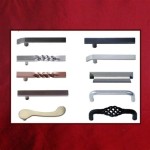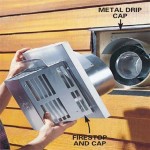Fireplace With TV On Top: Design Considerations and Practical Implications
The combination of a fireplace and a television mounted above it is a popular design choice in modern homes. This configuration aims to create a focal point in a living space, merging entertainment and warmth. However, integrating these two elements requires careful consideration of various factors, including aesthetics, safety, ergonomics, and functionality. A poorly planned installation can lead to discomfort, damage to equipment, and even potential hazards.
The appeal of this design often stems from its space-saving potential. In smaller homes or apartments, combining the fireplace and television into a single wall feature can maximize usable floor area. Furthermore, the visual symmetry and balanced appearance can contribute to a more aesthetically pleasing interior. The fireplace provides a source of warmth and ambiance, while the television offers entertainment, making the space ideal for relaxation and social gatherings. The synergy of these two elements can create a cozy and inviting atmosphere, transforming a living room into a central hub for household activities.
However, the practical implications of placing a television above a fireplace are numerous and require careful evaluation. The heat generated by the fireplace can potentially damage the television's internal components, leading to reduced lifespan or even complete failure. The viewing angle can also be problematic, as looking upwards for extended periods can cause neck strain and discomfort. Furthermore, the placement of cables and wiring must be carefully planned to ensure safety and prevent electrical hazards.
Heat Management: Protecting the Television
One of the primary concerns when mounting a television above a fireplace is the potential for heat damage. Fireplaces, whether gas, electric, or wood-burning, generate significant heat, which rises upwards. This heat can negatively impact the sensitive electronics within the television. Excessive heat can cause components to overheat, leading to premature failure and potentially voiding the television's warranty. LCD and LED screens are particularly susceptible to heat damage, as prolonged exposure can cause discoloration, blurring, or even permanent damage to the display panel.
To mitigate this risk, several strategies can be employed. The first and most important is to ensure adequate ventilation. A properly insulated mantel can act as a barrier, deflecting heat away from the television. The mantel should extend far enough out from the wall to provide sufficient protection. Consider the BTU output of the fireplace; higher BTU ratings mean more heat generated and the need for a more robust heat shield. Ventilation can be further improved by installing vents above the fireplace to allow heat to escape upwards, reducing the temperature around the television. The type of fireplace is also a crucial factor. Electric fireplaces generally produce less heat than gas or wood-burning fireplaces, making them a safer option for mounting a television above.
Another important consideration is the distance between the fireplace and the television. The greater the distance, the less likely the television is to suffer from heat damage. Aim for a minimum of 12 inches of clearance, and ideally more if the fireplace produces a significant amount of heat. Regularly monitor the temperature above the fireplace to ensure it remains within safe limits for the television. Some homeowners even use temperature sensors to provide real-time feedback and alert them to potentially dangerous heat levels. Choosing a television designed to withstand higher operating temperatures can also offer an additional layer of protection.
Finally, the use of a specialized television mount with built-in cooling fans can help to dissipate heat and further protect the television. These mounts typically feature integrated fans that actively circulate air around the television, helping to keep it cool. While these mounts can be more expensive, they provide an added level of security and peace of mind, particularly for homeowners who frequently use their fireplaces.
Ergonomics: Optimizing Viewing Angle
Beyond heat management, another critical consideration is the viewing angle. Mounting a television too high above a fireplace can lead to neck strain and discomfort, especially during extended viewing sessions. The ideal viewing angle is typically considered to be at eye level when seated. When a television is mounted significantly above this level, viewers are forced to tilt their heads upwards, which can cause muscle fatigue and pain in the neck and shoulders.
To address this issue, careful planning is essential. Before installing the television, measure the height of the seating area and determine the optimal viewing angle based on that height. The goal is to position the television so that the center of the screen is at or slightly below eye level when seated. This may require lowering the television or raising the seating area. Adjustable television mounts can also be used to provide flexibility in adjusting the viewing angle. These mounts allow the television to be tilted downwards, compensating for the elevated position and improving viewing comfort.
Size of the television also plays a role in ergonomics. A larger television screen may require a greater viewing distance, which can impact the optimal mounting height. Consider the viewing distance from the seating area when selecting the size of the television and determining its placement above the fireplace. In some cases, it may be necessary to compromise on the size of the television in order to achieve a comfortable viewing angle. Also, specialized articulating mounts allow for greater flexibility, enabling the television to be pulled down and angled forward for optimal viewing, and then pushed back against the wall when not in use. These types of mounts are useful where the height above the fireplace is considerable.
Furthermore, consider the typical viewing habits of the household. If the television is primarily used for casual viewing or background entertainment, a slightly higher viewing angle may be acceptable. However, if the television is used for more immersive experiences, such as watching movies or playing video games, a more comfortable viewing angle is essential. Observe how comfortable the viewing angle is before committing to the final installation. Temporary supports can be used to test the position of the television.
Installation and Safety Considerations
Proper installation is crucial for both safety and functionality. Incorrectly installed wiring can create fire hazards, and an improperly mounted television can fall, causing damage or injury. When installing a television above a fireplace, it is essential to follow all manufacturer's instructions and local building codes. If unsure, seeking professional assistance is highly recommended.
Pay particular attention to the routing of cables and wiring. Keep cables away from heat sources and avoid running them inside the fireplace cavity. Use cable management solutions to keep cables organized and prevent them from becoming a tangled mess. Ensure that all electrical connections are properly grounded and protected from moisture. Consider using a recessed outlet behind the television to conceal power and video cables, creating a cleaner and more aesthetically pleasing appearance.
The wall structure behind the fireplace must be strong enough to support the weight of the television and the mount. If the wall is made of drywall, it may be necessary to reinforce it with wood studs or install a mounting plate that spans multiple studs. For brick or stone fireplaces, use masonry anchors to securely attach the television mount. It is important to use hardware that is specifically designed for the type of wall material and the weight of the television. Incorrect hardware can lead to the television detaching from the wall, posing a significant safety hazard.
Finally, consider the placement of other components, such as cable boxes, Blu-ray players, and gaming consoles. These components typically require ventilation to prevent overheating. Do not place them directly on top of the fireplace or in enclosed spaces where heat can build up. Instead, consider using a media console or shelving unit to provide adequate ventilation and easy access to these components. Ensure all components are easily accessible for maintenance and repairs. Consider the potential for future upgrades or changes to the entertainment system and plan accordingly to ensure flexibility and ease of use.

Can I Mount My Tv Above The Fireplace

40 Stone Fireplace Designs From Classic To Contemporary Spaces Design Basement

Putting A Tv Above The Fireplace May Not Be Such Bad Idea After All

ᑕ❶ᑐ White Fireplace Tv Stand How To Choose The Right One

Fireplaces Tvs 4 Things You Re Doing Wrong Stylish

Best Modern Fireplace Designs Blaze

Living Room Top Decorating Ideas All Home Decor Built In Shelves Feature Wall Units

ᑕ❶ᑐ Myth Vs Reality Do Electric Fireplaces Ruin Tvs

Chimenea Freestanding Stainless Steel Base Marble Top Modern Design Tv Stand With Electric Fireplace Insert China Fire Place Made In Com

Pros And Cons Debate Putting Your Tv Over The Fireplace
Related Posts








